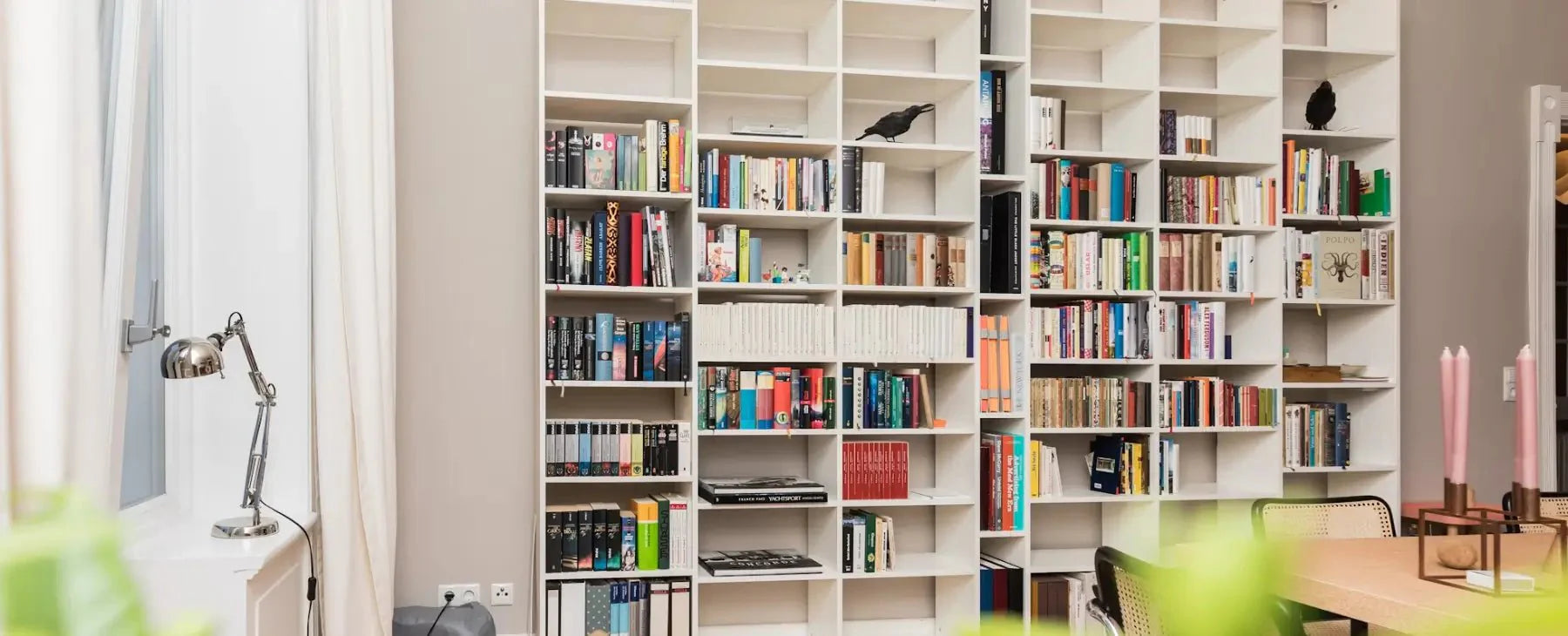If you love blending form and function in your home décor, you’ve likely come across the étagère—a chic, open shelving unit that adds both storage and sophistication to any room. But what exactly is an étagère, and how does it differ from a traditional bookcase? In this guide, we’ll explore its origins, design variations, and styling tips to help you make the most of this versatile piece.
Etagere Definition
An étagère (pronounced ay-ta-ZHAIR) is a French term for a freestanding, open shelving unit, typically used to display books, decorative objects, or plants. Unlike closed cabinets, an étagère features exposed shelves, often with intricate detailing, making it as much a statement piece as a functional one.
For language enthusiasts, étagère is a feminine noun in French ("une étagère"). It comes from the Old French estage (meaning "shelf" or "floor"), which itself derives from the Latin staticum (a place to stand).

History of the Étagère
The étagère rose to prominence in 18th-century France during the Rococo and Neoclassical periods. As salons became hubs of intellectual and social gatherings, these elegant shelves showcased homeowners’ refined tastes—holding everything from porcelain figurines to leather-bound volumes.
By the Victorian era, étagères had spread across Europe and America, often crafted from dark woods with intricate carvings. Today, they’ve evolved into modern, minimalist designs, yet retain their original charm.
What Is the Difference Between an Étagère and a Bookcase?
At first glance, an étagère and a bookcase may seem interchangeable—they both offer vertical storage and can hold books or decorative objects. However, they differ significantly in design, function, and aesthetic intent. Here’s how to tell them apart(Or click here for more details on étagère vs bookcase):
1. Design & Construction
An étagère is typically designed with elegance in mind. Its frame is often slimmer and more refined, crafted from materials like brass, wrought iron, or chrome, with open metalwork or glass shelving that enhances visual lightness. Think of it as a piece of functional art.
A bookcase, by contrast, is more practical. It’s typically built from solid wood or engineered materials, with sturdy construction meant to support the weight of many books.
2. Openness & Structure
Étagère shelves are usually open-backed, creating an airy, uncluttered feel—perfect for styling small spaces. Bookcases, however, often have solid backs and sides, providing structure and support for heavy items.
3. Purpose & Styling
An etagere bookshelf focuses on a curated display. It’s ideal for showcasing vases, candles, or decor in a stylish arrangement. A bookcase is primarily used for storing books and files in a more utilitarian manner.
4. Placement & Flexibility
An etagere shelf works well as an accent piece or room divider in any room—from living rooms to bathrooms. Bookcases are usually placed against walls in offices or libraries for maximum function.

Common Materials and Styles
Étagères come in a variety of materials to match different decor styles:
- Metal – Industrial or modern aesthetic
- Wood – Classic and rustic styles
- Glass – Sleek and minimalist
- Mixed materials – Blending wood and metal for transitional designs
How to Style an Étagère
Styling an étagère shelf is as much about visual balance as it is about personal expression. Whether you're using it as an etagere bookshelf or a decorative accent in your living room, the key is to create a cohesive, curated look without overwhelming the eye.
1. Create Balance Through Layering
Avoid a cluttered or overly symmetrical look by mixing items of different shapes and sizes. Combine vertically stacked books with horizontal piles, and intersperse them with decor elements like vases, framed photos, or small potted plants. The goal is to lead the eye naturally from shelf to shelf, creating visual interest without chaos.
2. Use a Cohesive Color Palette
Choose a primary color scheme—such as warm neutrals, monochrome blacks and whites, or earth tones—and build around it. Introduce accent colors sparingly through ceramics, candles, or art books. A consistent palette helps the etagere shelf look intentional rather than random.
3. Blend Function with Style
Étagères aren't just for show—they can also offer subtle storage. Use decorative baskets or bins on the lower shelves to hide items like remotes, cords, or paperwork. If you're using your etagere bookshelf in a home office or bedroom, consider mixing stylish containers with books for a polished but practical setup.
4. Add Depth with Light and Texture
To elevate the mood, consider adding small lighting elements like string lights, LED spotlights, or a compact table lamp. Incorporating a mix of materials—such as glass, wood, metal, and fabric—also gives the display texture and richness.
5. Refresh It Seasonally
One of the joys of an étagère is its adaptability. Rotate your decor throughout the year to reflect the seasons—think seashells and fresh greenery in summer, pumpkins and muted tones in fall, or twinkle lights and pine in winter. This not only keeps your space feeling fresh but also lets your style evolve with the year.

Final Thoughts
Whether you're drawn to its airy design or its elegant versatility, an étagère shelf is the perfect blend of style and function. If you're looking to bring this timeless piece into your own space, Tribesigns offers a wide selection of modern etagere bookshelves crafted with sturdy materials and stylish finishes. Browse Tribesigns' collection of etagere shelves today and add a touch of sophistication to your home.



